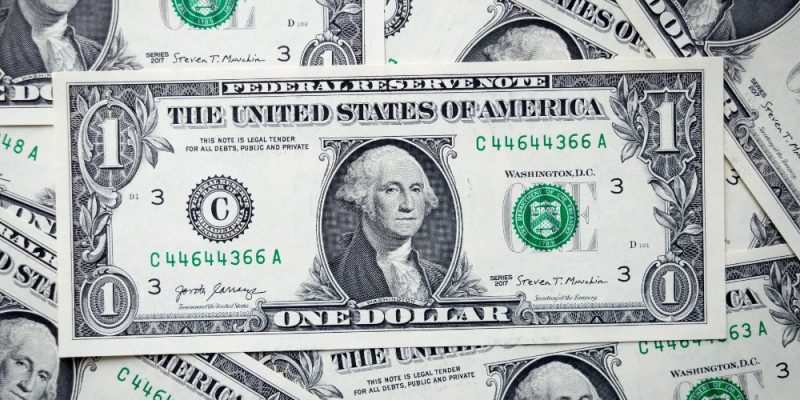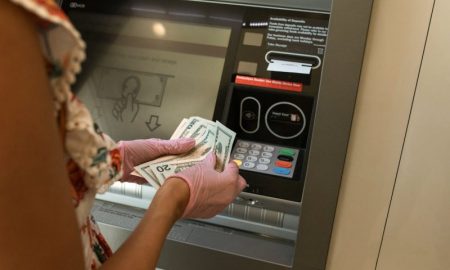
How the One-Dollar Rule Helps You Spend Wisely

Avoiding impulse purchases has become increasingly difficult. Social media platforms like Instagram and TikTok encourage quick spending with tempting “Shop Now” buttons and in-app shopping features. With a few taps, trendy clothing, gadgets, or decor items land in the cart, often without much thought.
However, these small purchases accumulate over time, making it harder to focus on financial priorities. Instead of spending recklessly, financial experts emphasize the importance of building an emergency fund and consistently contributing to retirement accounts like IRAs and 401(k)s. Many professionals recommend eliminating consumer debt—such as credit cards, car loans, and student loans—before shifting focus to wealth-building.
A Finance Expert’s Journey to Debt-Free Living
Bernadette Joy, a personal finance coach and author of “CRUSH Your Money Goals,” took a different approach to budgeting. In an interview with TheStreet, she shared how she and her husband eliminated nearly $300,000 in student loan and mortgage debt before aggressively saving for retirement.
Her strategy was unconventional but effective. Instead of following extreme budgeting methods that restrict all discretionary spending, she focused on a principle she calls the one-dollar rule. This mindset shift helped her avoid guilt-driven purchases while still enjoying the things she loved. By following this method, she retired debt-free in February 2024—the same month she turned 40.

Instagram | bernadebtjoy | Bernadette Joy became debt-free and retired at 40 by following her smart money strategy.
Budgeting Without Feeling Miserable
Strict budgeting often feels suffocating. Tracking every expense and constantly worrying about minor purchases can lead to frustration rather than financial discipline. Joy experienced this firsthand, realizing that traditional budgeting methods made her feel worse when she spent money rather than motivating her to save.
Instead of completely cutting out non-essential spending, she adopted a different mindset. She prioritized purchases that truly mattered and eliminated unnecessary spending on impulse buys or items bought purely out of convenience. This allowed her to spend freely on what she valued while still maintaining financial control.
How the One-Dollar Rule Works
Joy’s method revolves around amortizing purchases based on cost per use. Instead of considering just the price tag, she calculated how much each item would cost per use before making a purchase.
For example, if a $1,750 couch were used daily for five years, the cost per use would be well under a dollar, making it a worthwhile investment. However, a $300 handbag that might only be used a few times per year wouldn’t meet her criteria. Similarly, she would only purchase a $250 Dutch oven if she realistically expected to use it at least 250 times.
Applying the One-Dollar Rule to Everyday Purchases
Joy uses this method whenever she shops for clothing, accessories, and home essentials. If an item costs $1 or less per use, she confidently makes the purchase without second-guessing. This strategy eliminates impulse spending while removing the guilt often associated with shopping.
“The one-dollar rule has not only kept me from spending on things I don’t need but has also removed guilt and debate when spending on things I do need,” she explains.
By following this approach, she ensured that every purchase aligned with her financial goals. This small but powerful habit played a crucial role in her ability to pay off debt and save aggressively for retirement.
How This Rule Can Help You Save More for Retirement

Freepik | To alleviate spending guilt and financial worry, the one-dollar rule provides a simple guideline for managing money.
Many people struggle to balance spending with saving, often feeling guilty about purchases while worrying about their financial future. The one-dollar rule simplifies decision-making, allowing people to spend intentionally while still prioritizing financial stability.
By adopting this method, individuals can:
1. Reduce impulse purchases that don’t provide long-term value
2. Eliminate buyer’s remorse by ensuring every purchase is meaningful
3. Save more money for retirement without feeling restricted
The key is to assess whether a purchase aligns with long-term financial priorities. If an item’s cost per use exceeds $1, reconsidering the purchase may be a smarter choice.
Why This Method Works for Long-Term Financial Success
This approach differs from traditional budgeting methods that focus solely on cutting expenses. Instead, it promotes mindful spending—encouraging individuals to be selective with their purchases while still enjoying the things they love.
Joy’s success story proves that achieving financial freedom doesn’t require extreme frugality. Instead, it requires strategic spending, prioritization, and a shift in mindset. The one-dollar rule provides a practical framework that helps individuals stay financially disciplined while avoiding the stress of rigid budgeting.
By applying this method, anyone can take control of their spending, reduce unnecessary expenses, and accelerate their journey toward financial independence.
More in Finance
-
`
US Opposes Hezbollah Ally’s Appointment to Lebanon’s Finance Ministry
The United States is actively pressuring Lebanese officials to block Hezbollah and its allies from selecting the country’s next finance minister....
February 12, 2025 -
`
Ed Sheeran Becomes the First International Artist to Perform in Bhutan
Ed Sheeran has achieved a groundbreaking milestone in his music career. The “Bad Habits” singer, 33, became the first international artist...
February 5, 2025 -
`
New Jersey Issues Warning to 11,000 Businesses for Selling Flavored Vapes
In New Jersey, flavored vape products are illegal, but thousands of businesses continue to violate the law. According to Attorney General...
January 29, 2025 -
`
Why Prince Harry and Meghan Markle Hide Their Children’s Faces Online
Prince Harry and Meghan Markle remain two of the most talked-about public figures, yet their approach to sharing details about their...
January 22, 2025 -
`
Why Are Innovation Hubs Crucial for Entrepreneurial Success?
Innovation hubs are transformative spaces that empower entrepreneurs by providing the resources, mentorship, and collaborative environments needed to turn their ideas...
January 14, 2025 -
`
How to Finance an ATM Business in 3 Easy-to-Follow Steps
Starting an ATM business can be a fantastic way to earn passive income, but the first hurdle is figuring out how...
December 19, 2024 -
`
Former RXBar CEO Peter Rahal is Betting Everything on New Protein Bar Startup, David
Peter Rahal, the visionary entrepreneur behind RXBar, is back with a bold new venture. After selling RXBar to Kellogg’s for a...
December 15, 2024 -
`
Can investing in Nvidia Still Offer Value After Its Explosive Growth?
This year, Nvidia has been one of the stock market’s most impressive performers. Starting at $50 per share (split-adjusted) in January,...
December 6, 2024














You must be logged in to post a comment Login